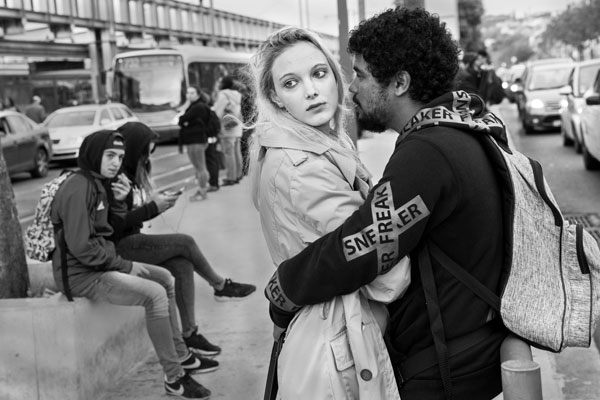All About Framing Streets
Table of ContentsThe 30-Second Trick For Framing StreetsThe Of Framing StreetsOur Framing Streets DiariesNot known Details About Framing Streets Framing Streets - QuestionsFraming Streets Can Be Fun For Anyone
, typically with the goal of recording pictures at a decisive or poignant moment by mindful framework and timing. https://www.easel.ly/infographic/04m0k9.
More About Framing Streets
Susan Sontag, 1977 Street photography can concentrate on individuals and their behavior in public. In this regard, the street professional photographer resembles social docudrama professional photographers or photojournalists that also work in public places, but with the goal of recording newsworthy events. Any of these digital photographers' pictures might capture people and home noticeable within or from public areas, which often requires navigating honest concerns and laws of privacy, protection, and home.
Representations of daily public life create a category in virtually every period of world art, starting in the pre-historic, Sumerian, Egyptian and early Buddhist art durations. Art dealing with the life of the road, whether within views of cityscapes, or as the leading motif, appears in the West in the canon of the North Renaissance, Baroque, Rococo, of Romanticism, Realistic look, Impressionism and Post-Impressionism.
7 Simple Techniques For Framing Streets
Louis Daguerre: "Blvd du Holy place" (1838 or 1839) In 1838 or 1839 the very first photograph of figures in the road was taped by Louis-Jacques-Mand Daguerre in one of a pair of daguerreotype sights drawn from his studio window of the Boulevard du Temple in Paris. The 2nd, made at the elevation of the day, shows an uninhabited stretch of road, while the other was taken at regarding 8:00 am, and as Beaumont Newhall records, "The Blvd, so continuously loaded with a relocating bunch of pedestrians and carriages was perfectly solitary, other than a person who was having his boots brushed.
, who was motivated to carry out a comparable documents of New York City. As the city created, Atget helped to promote Parisian roads as a worthy subject for photography.

Rumored Buzz on Framing Streets
Martin is the very first taped professional photographer to do so in London with a disguised cam. Mass-Observation was a social study organisation established in 1937 which intended to videotape everyday life in Britain and to tape the responses of the 'man-in-the-street' to King Edward VIII's abdication in 1936 to marry separation Wallis Simpson, and the sequence of George VI. Between 1946 and 1957 Le Groupe des XV yearly exhibited work of this kind. Andre Kertesz. Circus, Budapest, 19 May 1920 Street digital photography created the significant material of two events at the Gallery of Modern Art (Mo, MA) in New York curated by Edward Steichen, 5 French Professional Photographers: Brassai; Cartier-Bresson, Doisneau, Ronis, Izis in 1951 to 1952, and Post-war European Digital Photography in 1953, which exported the concept of road photography internationally.

The smart Trick of Framing Streets That Nobody is Discussing
The recording equipment was 'a surprise electronic camera', a 35 mm Contax hidden underneath his coat, that was 'strapped to the breast and linked to a lengthy cord strung down the ideal sleeve'. His job Get More Info had little contemporary effect as due to Evans' sensitivities about the creativity of his task and the personal privacy of his topics, it was not released up until 1966, in the publication Many Are Called, with an introduction written by James Agee in 1940.
Helen Levitt, after that an instructor of young youngsters, connected with Evans in 193839. She documented the transitory chalk illustrations - Lightroom presets that belonged to kids's road culture in New York at the time, along with the kids who made them. In July 1939, Mo, MA's brand-new photography area included Levitt's job in its inaugural exhibitionRobert Frank's 1958 publication,, was significant; raw and usually indistinct, Frank's photos questioned mainstream photography of the moment, "challenged all the official guidelines laid down by Henri Cartier-Bresson and Pedestrian Evans" and "flew in the face of the wholesome pictorialism and genuine photojournalism of American magazines like LIFE and Time".